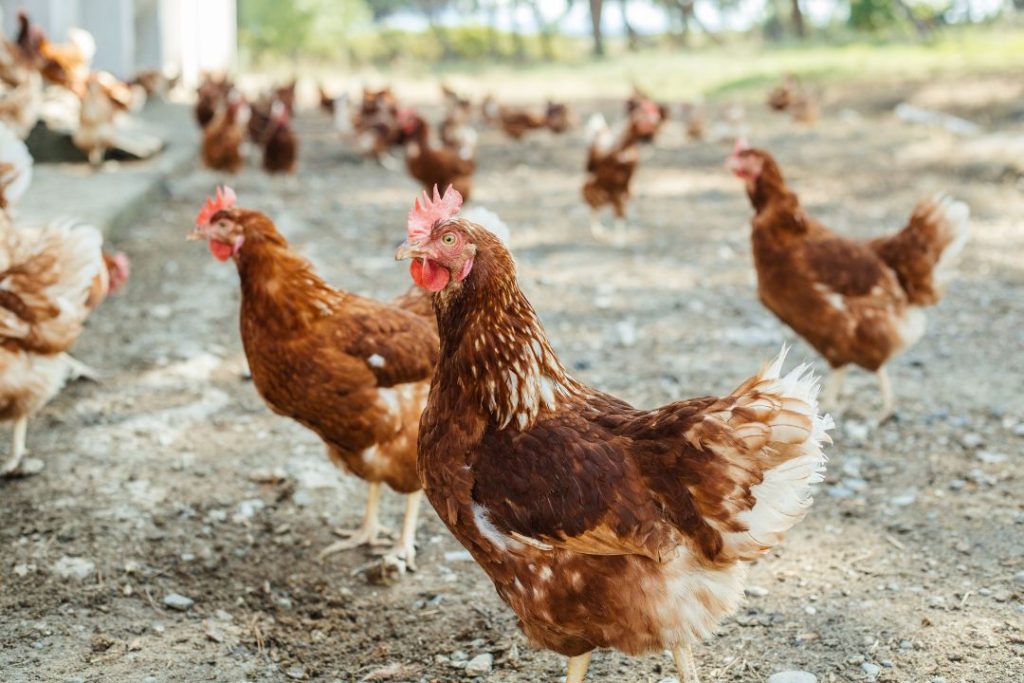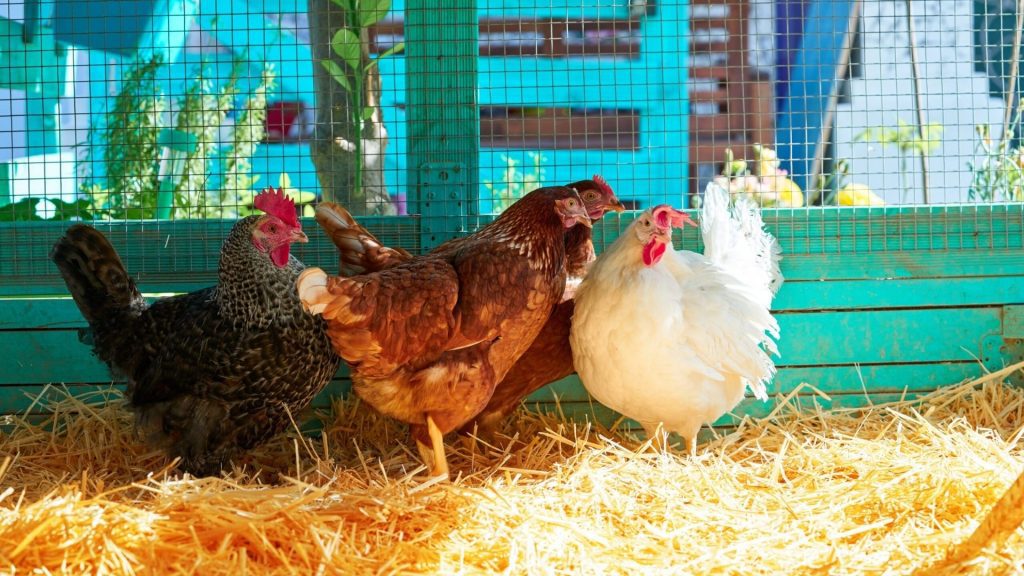Imagine you step into your backyard coop and find one of your beloved chickens with a broken beak. It’s a distressing situation for any poultry owner. What to do if your chicken has a broken beak in this situation?
However, fear not! This guide will tell you the essential steps to take in this unfortunate scenario. Whether a minor crack or a more severe break, your chicken’s well-being is your priority.
If your chicken’s beak becomes broken immediately, you should isolate your affected chicken, control bleeding, provide soft food and hydration, and minimize the discomfort. To treat your chicken’s beak cracks, maintain beak hygiene, administer the beak-specific ointment, and monitor the healing progress.
Let’s explore the best practices for providing first aid and proper treatment for your chicken with a broken beak.
What Is Chicken Beaks Anatomy and Function?
To truly appreciate potential solutions, it’s vital to comprehend the intricacies of your chicken’s beak. Functioning as a multi-purpose instrument, it serves roles in feeding, hydration, grooming, and self-protection.
It is crafted from a blend of bone and keratin. Its architecture adeptly facilitates a spectrum of vital functions. The structural design of a chicken’s beak plays a pivotal role in its daily existence. This beak has adapted to execute a wide array of tasks through evolution.
Its composition ensures optimal strength while allowing versatility, permitting the bird to carry out tasks indispensable to its survival.
Feeding Adaptations
Feeding is a primal necessity, and the beak is the primary tool. Its tapered, slightly curved shape aids in pecking, grasping, and manipulating food. From scavenging grains to capturing small prey, the beak’s form empowers the chicken’s feeding behavior.
Hydration Mechanisms
Beyond feeding, the beak is essential for the intake of water. The beak’s tip acts as a precision instrument, facilitating the bird’s ability to drink. This simple yet effective mechanism showcases the beak’s remarkable adaptation to life’s basic requirements.
Grooming Facilitation
Grooming is another aspect of a chicken’s life facilitated by its beak. The beak’s intricate structure permits the bird to preen its feathers meticulously. This behavior maintains plumage and strengthens social bonds within flocks through mutual grooming.
Defensive Roles
Your chicken’s beak isn’t merely a tool for sustenance. Instead, it’s also a weapon for their protection. A chicken can employ its beak as a means of defense when it is threatened. Its pointed edge can deter predators, showcasing the beak’s dual significance in survival.
Sensory Abilities
Remarkably, your chicken’s beak isn’t devoid of sensory function. It’s equipped with nerve endings, enabling tactile exploration of the surroundings. This sensory aspect aids in foraging, as the bird can assess the texture and quality of potential food sources.
Communication Insights
Communication within the chicken community involves a nuanced interplay of sounds and body language. The beak also contributes here – from emitting warning calls to engaging in mating rituals. The beak’s versatility underscores its role in effective communication.
Human Interaction
Human involvement further emphasizes the importance of a chicken’s beak. For poultry farming, understanding beak anatomy is crucial. Trimming beaks (only done in specific cases) requires precision to ensure the bird’s welfare.
Ethical Considerations
Beak trimming for farming purposes sparks ethical debates. Striking a balance between animal welfare and agricultural practices is imperative. It prompts discussions about alternative methods to cater to both concerns.
Innovation and Challenges
Research continues to explore ways to enhance chicken welfare. Innovations like enriching environments aim to accommodate natural behavior. Challenges persist, demanding solutions that align with the birds’ well-being.
Your chicken’s beak stands as an intricate testament to evolution’s fine-tuning. Its structure and functions resonate across survival, sustenance, and interaction. A comprehensive comprehension of its anatomy paves the way for addressing welfare, ethical, and agricultural dimensions.
What to Do If Your Chicken Has A Broken Beak?
The first step is to assess the extent of the beak break. Is it a minor crack or a more severe fracture? Gently examine the beak and surrounding area to determine any bleeding, misalignment, or pain response from the chicken.
Immediate First Aid Steps
If your chicken’s beak sustains a break, it’s crucial to take swift and appropriate action to alleviate its distress and promote healing. By following these immediate first-aid steps, you can provide your feathered friend with the best chance of recovery:
1. Isolate the Affected Chicken
Upon discovering the broken beak, the first step is to isolate the injured chicken from the rest of the flock. This serves two essential purposes: it minimizes stress and prevents potential harm that could arise from interactions with other chickens.
The injured chicken should be moved to a tranquil and comfortable environment where it can experience reduced sensory stimuli and enjoy security.
2. Control Bleeding (if bleeding is evident)
In instances where bleeding accompanies the beak break, your prompt response is paramount. To address the bleeding, take a clean cloth or sterile gauze pad and gently apply pressure to the bleeding area.
The goal is to encourage clotting and stem the flow of blood. You should take care to exert only gentle pressure; excessive force could exacerbate the injury or cause further distress to the chicken. Maintain the pressure for several minutes, monitoring the bleeding until it subsides.
3. Provide Soft Food and Hydration
The aftermath of a beak break often renders eating challenging for the chicken due to the discomfort it experiences. Offer easily digestible and moistened food to support its nutritional needs during this critical time.
Soaking the food in water or providing specially formulated soft food ensures the chicken can consume it without undue strain. Simultaneously, ensure access to clean and fresh water. Proper hydration is essential for the chicken’s overall well-being and aids in its recovery process.
4. Minimize discomfort
The broken beak can cause significant discomfort for the chicken. In light of this, handling the bird with extreme care and gentleness is crucial. Excessive handling could intensify its discomfort and potentially worsen the injury.
However, if your chicken’s discomfort is evident and considerable, you can consider providing a mild pain reliever approved for poultry use. It’s crucial to adhere strictly to the recommended dosage to avoid adverse effects.
How to Treat Your Chicken’s Minor Beak Cracks?
When confronted with minor cracks in your chicken’s beak, timely and appropriate treatment is essential to ensure the well-being of your feathered companion. Here’s a detailed guide on how to address these cracks and aid in their healing:
1. Maintain Beak Hygiene
Prioritize cleanliness to prevent potential complications. Gently cleanse the cracked area using a saline solution. Crafting this solution involves dissolving a teaspoon of salt in a cup of warm water. The saline solution is a gentle yet effective antiseptic, thwarting the onset of infections that might impede healing.
2. Administer Beak-Specific Ointment
A veterinarian’s counsel is invaluable in selecting the right ointment for treating the cracked beak. Expert recommendations ensure you opt for an ointment that meets your chicken’s needs.
These specialized ointments contribute significantly to the healing process while concurrently shielding the area from infection. Applying the ointment as directed by your veterinarian can optimize outcomes.
3. Monitor the Progress of Healing
Vigilance in observing your chicken’s beak is pivotal. Keep a watchful eye on the cracked area to ascertain that the healing process is unfolding as anticipated. Positive indicators include diminished discomfort, visible closure of the crack, and the absence of inflammation.
If you detect any signals of infection or a deterioration in the condition, seeking veterinary intervention is essential.
How To Handle Your Chicken’s Severe Beak Fractures?
Navigating the complexities of severe beak fractures requires a comprehensive approach to ensure your chicken’s well-being. Here’s a detailed guide on handling these challenging situations:
1. Stabilize the Beak
In scenarios involving severe beak fractures, your foremost objective is stabilizing the fractured area. Promoting proper alignment sets the foundation for effective healing. Approach this process delicately, gently realigning the broken segments to the best of your ability.
For added stability, consider utilizing a veterinarian-approved adhesive that can assist in holding the fragments in place during the healing period.
2. Seek Veterinary Consultation
In the face of severe fractures, seeking professional veterinary assistance is paramount. The expertise of a veterinarian is essential for accurate evaluation and appropriate treatment recommendations.
Rely on their knowledge to determine the best action for your chicken’s unique situation. Veterinary guidance might encompass options such as employing beak splints or even surgical intervention to optimize recovery.
3. Adhere to Post-Treatment Protocols
Meticulous adherence to post-treatment protocols is essential if your chicken undergoes surgical procedures or receives professional care for a severe beak fracture. Veterinarians provide precise instructions for post-treatment care and monitoring.
Complying diligently with these directives ensures your chicken’s successful recovery journey. By maintaining vigilance and adhering to the prescribed regimen, you actively contribute to your chicken’s comfort and eventual restoration to health.
4. Provide a Comfortable Environment
During recovery, offering your chicken a comfortable and stress-free environment plays a crucial role. Minimize external stimuli and disturbances, allowing your chicken to focus on healing without undue stress. Ensure its living space is conducive to rest and recuperation, promoting a seamless recovery process.
5. Monitor for Complications
While your chicken is on the path to recovery, remain vigilant for any signs of complications. Regularly assess the beak’s healing progress, watching for signs of infection, inflammation, or discomfort.
Should you observe any concerning developments, promptly consult your veterinarian for guidance and intervention.
6. Nourishment and Hydration
Supporting your chicken’s recovery also involves ensuring proper nourishment and hydration. Offer easily digestible and moistened food to aid consumption, as eating might be challenging during healing.
Concurrently, maintain a constant clean water supply to prevent dehydration and promote overall well-being.
How To Prevent Your Chickens Beak Injuries?
Ensuring the safety and well-being of your chickens goes beyond immediate care; it involves proactive steps to prevent beak injuries. Here’s a detailed breakdown of strategies to implement:
1. Provide Proper Nutrition
Offer a well-balanced diet to cater to your chickens’ nutritional needs. Essential nutrients, like calcium and vitamin D, are vital in maintaining your chicken’s strong beak and bone health.
A diet rich in these elements reduces the likelihood of your chicken’s beak fractures and other bone-related issues.
2. Maintain Coop Conditions
Creating a safe, comfortable, and conducive environment in your chicken coop is crucial. Regularly inspect the area and eliminate any potential hazards, such as sharp objects or rough surfaces that could inadvertently cause beak injuries.
Additionally, ensure that your chickens have adequate space and avoid overcrowding, which can lead to accidents and increased stress.
3. Observe Flock Dynamics
Keeping a watchful eye on your chickens’ interactions is essential. The dynamics within the flock, including dominance behavior and pecking order struggles, can sometimes escalate into aggressive encounters. It results in accidental beak injuries. Address any signs of aggression promptly to prevent such incidents.
4. Provide Enrichment Activities
Enrichment activities are essential for keeping your chickens mentally and physically engaged. Introduce pecking toys and opportunities for foraging to redirect their natural behavior. Engaged chickens are less likely to exhibit aggressive tendencies, reducing the risk of beak injuries from confrontations.
5. Implement Safe Handling Practices
When interacting with your chickens, use gentle and skilled handling techniques. Improper handling can lead to stress and panic, potentially resulting in accidents and beak injuries. Approach your chickens calmly and confidently to minimize the risk of such incidents.
6. Regular Beak Checks
Incorporate regular beak checks into your routine care regimen. Examine each chicken’s beak for signs of abnormalities, such as cracks, chips, or overgrowth. Early detection allows you to address potential issues promptly and prevent further complications.
7. Optimal Perching Arrangements
Craft perches with careful consideration of their dimensions. A perch that is neither too narrow nor positioned too high reduces the likelihood of falls, which can result in beak injuries or other physical harm.
8. Maintain Proper Lighting
Proper lighting within the coop is essential for preventing collisions and accidents. Well-lit spaces enable your chickens to move around quickly and avoid potential hazards. Thereby it is reducing the beak injury risk.
9. Address Stress Factors
Stress can contribute to various issues within a chicken flock, including aggressive behavior that might lead to beak injuries. Minimize stressors by ensuring adequate space, proper nutrition, and a calm environment. Address any signs of stress promptly to maintain a harmonious flock.
10. Regular Health Assessments
Frequent health assessments for your chickens are essential. Regularly examine each bird’s overall health, including its beaks. Detecting potential problems early allows you to intervene and take preventive measures to safeguard against beak injuries.
Final Thought
So, after going through the above article, now you know “what to do if your chicken has a broken beak”. During poultry rearing, encountering a broken beak in your chicken can be a problematic event.
Minor cracks and severe fractures require different approaches, from providing immediate first aid to seeking professional veterinary assistance. Follow the above-mentioned steps and maintain proactive prevention measures.



